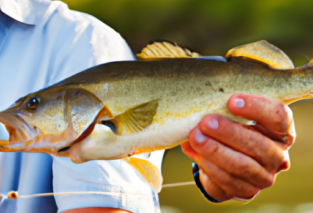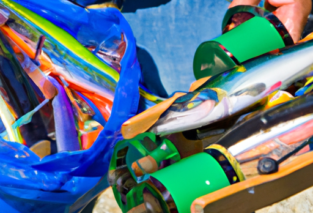Are you someone who loves to fish? If so, then you know how important it is to have the right fishing line. With so many options available, it can be overwhelming to choose the right type. That’s why we’ve created a comprehensive guide to help you make the best decision. Whether you’re a beginner or an experienced angler, this article will break down the differences between monofilament, fluorocarbon, and braided fishing lines. We’ll discuss the pros and cons of each, helping you choose the perfect line for your fishing needs. So, grab your rod and get ready to dive into the world of fishing lines!

Factors to Consider
When it comes to choosing the right fishing line type, there are several factors that should be taken into consideration. These factors will help determine which type of line is best suited for your specific fishing style and targets. The factors include visibility, strength and durability, sensitivity, knot strength, maneuverability, casting distance, abrasion resistance, cost, and personal preference. By considering each of these factors, you can make an informed decision and select the fishing line that will enhance your fishing experience.
Fishing Style and Targets
First and foremost, it is important to consider your fishing style and targets. Are you primarily a freshwater or saltwater angler? Do you prefer casting or trolling? Are you targeting larger species or smaller fish? These are all important questions to ask yourself when selecting a fishing line. Different fishing styles and targets may require different line types in order to optimize your chances of success.
Visibility
Visibility is another crucial factor to consider. How visible do you want your fishing line to be in the water? In certain fishing situations, such as when fishing in clear water or targeting wary fish, a more invisible line may be advantageous. On the other hand, in situations where visibility is not a concern, a more visible line may be preferred for easier line management and bite detection.
Strength and Durability
Strength and durability are key considerations when choosing a fishing line. The line must be able to withstand the weight and pressure of the fish you are targeting. Additionally, it should be able to withstand the elements, such as UV rays and water conditions. A strong and durable line will minimize the chance of breakage and increase your chances of successfully landing your catch.
Sensitivity
Sensitivity is an important factor for anglers who want to have a better feel for what is happening at the end of their line. A sensitive line will allow you to detect the slightest bites and movements, leading to more successful hooksets. This is especially important when fishing in situations where fish are more subtle in their strikes or when finesse techniques are being employed.
Knot Strength
Knot strength is crucial in ensuring that your fishing line stays securely tied to your hooks, lures, and other terminal tackle. A line with good knot strength will prevent breakages and increase your chances of landing fish. It is important to select a line that has high knot strength to minimize the risk of losing your catch due to a faulty knot.
Maneuverability
Maneuverability refers to how easily and smoothly the fishing line can be cast, retrieved, and manipulated in the water. Different line types may have varying levels of maneuverability, which can affect your ability to control your bait or lure and work it effectively. Considering your preferred fishing techniques and the conditions you often fish in will help determine the level of maneuverability you require in a fishing line.
Casting Distance
Casting distance is an important factor for anglers who enjoy casting lures or need to cover a large area of water. A fishing line with good casting distance will allow you to reach distant targets and increase your chances of enticing fish to bite. Certain line types, such as braided lines, tend to excel in casting distance due to their low diameter and lack of stretch.
Abrasion Resistance
Abrasion resistance is a crucial factor when fishing in environments where the line may come into contact with rocks, submerged vegetation, or other abrasive surfaces. A line with good abrasion resistance will be less prone to fraying or breaking when faced with such obstacles, ensuring that it remains intact and capable of withstanding tough fishing conditions.
Cost
Cost is an important consideration for many anglers. Fishing lines can vary significantly in price, and it is important to find a balance between quality and affordability. While it may be tempting to opt for the cheapest option available, it is essential to consider the performance and durability of the line before making a purchase.
Personal Preference
Lastly, personal preference plays a significant role in selecting the right fishing line type for you. Some anglers may have had success with a particular brand or line type in the past and may prefer to stick with what they know. Others may be more open to trying new options and experimenting with different line types. It is important to consider your personal preferences and experiences when choosing a fishing line that you feel confident and comfortable using.
Monofilament Fishing Line
Definition and Characteristics
Monofilament fishing line is one of the most common and widely used types of fishing line. It is made from a single strand of nylon or other synthetic materials and is known for its versatility and ease of use. Monofilament lines are available in various diameters and strengths to suit different fishing situations.
Advantages
There are several advantages to using monofilament fishing line. Firstly, it is affordable and widely available, making it accessible to anglers of all levels of experience and budgets. Monofilament lines also offer good knot strength, allowing anglers to tie secure knots without worrying about breakages. Additionally, monofilament lines are buoyant, which can be advantageous when fishing with topwater lures or when floating baits.
Another benefit of monofilament fishing line is its forgiving nature. The line has some stretch, which can help absorb the shock of sudden strikes or aggressive fish behavior, reducing the risk of breakages. This forgiving nature also makes monofilament lines less likely to damage fishing rods or reels.
Disadvantages
While monofilament fishing line has its advantages, it also has some drawbacks. One of the main disadvantages of monofilament is its high visibility in the water. For anglers targeting finicky or skittish fish, this increased visibility can make it difficult to get bites. Additionally, monofilament lines tend to have less sensitivity compared to other line types, which may result in missed bites or decreased feel for what is happening at the end of the line.
Another disadvantage of monofilament lines is their tendency to absorb water. This can cause the line to weaken over time and can also lead to decreased casting distance due to added weight. Additionally, the absorption of water can result in line memory, causing the line to coil and tangle more easily.
Best Uses
Monofilament fishing lines are suitable for a wide range of fishing applications. They are commonly used in freshwater fishing for species such as bass, trout, and panfish. In saltwater, monofilament lines are often used for bottom fishing, trolling, or light tackle applications. Their versatility makes them a popular choice among anglers who fish in various environments and target different species.
Brands to Consider
When shopping for monofilament fishing line, there are several reputable brands to consider. Berkley Trilene, Stren, and SpiderWire are all well-known brands that offer a variety of monofilament lines to suit different fishing needs. It is advisable to read reviews and consult with experienced anglers to determine which brand and specific line model may be best for your fishing style and targets.

Fluorocarbon Fishing Line
Definition and Characteristics
Fluorocarbon fishing line is known for its near-invisibility in the water, making it a popular choice for anglers who fish in clear or heavily pressured waters. It is made from a combination of fluoropolymer materials, which give it unique properties and characteristics.
Advantages
One of the main advantages of fluorocarbon fishing line is its low visibility in the water. Due to its refractive index, fluorocarbon lines are nearly invisible underwater, making them ideal for targeting wary or line-shy fish. This increased invisibility can lead to more bites and increased success rates.
Fluorocarbon lines also have a higher density compared to monofilament lines, which allows them to sink faster. This can be advantageous when fishing deeper waters or when using techniques that require the bait or lure to reach a certain depth quickly. Furthermore, fluorocarbon lines offer good resistance to UV rays and are less prone to breaking down due to sun exposure.
Another advantage of fluorocarbon lines is their sensitivity. They tend to have less stretch compared to monofilament lines, allowing anglers to have a better feel for what is happening at the end of their line. This increased sensitivity can result in better bite detection and more accurate hooksets.
Disadvantages
Despite its advantages, fluorocarbon fishing line also has some drawbacks. One of the main disadvantages is its cost. Fluorocarbon lines tend to be more expensive compared to monofilament or braided lines. While the increased invisibility and other benefits may be worth the higher price for some anglers, others may find it difficult to justify the additional cost.
Another drawback of fluorocarbon lines is their stiffness. Fluorocarbon tends to be stiffer than other line types, which can make it more difficult to cast and handle. This stiffness can also result in increased line memory and coiling, leading to more tangles and frustration.
Best Uses
Fluorocarbon fishing lines are best suited for situations where visibility is a concern and when fishing in clear or heavily pressured waters. They are commonly used in finesse fishing techniques, such as drop shotting or fishing with small jigs. Fluorocarbon lines are also popular among anglers who fish for species such as trout, bass, walleye, and salmon.
Brands to Consider
There are several reputable brands that offer quality fluorocarbon fishing lines. Seaguar, Berkley Trilene, and P-Line are all well-known brands that produce a range of fluorocarbon lines suitable for different fishing applications. It is advisable to research and compare the specific characteristics and performance of each brand’s fluorocarbon lines to find the one that best fits your fishing needs and preferences.
Braided Fishing Line
Definition and Characteristics
Braided fishing line, often referred to as “braid,” is made by weaving together multiple strands of synthetic fibers, such as Spectra or Dyneema. This results in a super-strong and thin line with unique properties.
Advantages
One of the main advantages of braided fishing lines is their incredible strength. Due to their construction, braided lines have a much higher tensile strength compared to monofilament or fluorocarbon lines of the same diameter. This high strength-to-diameter ratio allows anglers to use thinner line while still maintaining excellent overall strength. The increased strength of braided lines is particularly beneficial when targeting larger and more powerful fish species.
Another advantage of braided lines is their low stretch. Unlike monofilament or fluorocarbon lines, braided lines have minimal stretch, resulting in increased sensitivity and better bite detection. This lack of stretch also contributes to better hooksets, as there is less give in the line when setting the hook.
Braided lines also excel in casting distance. Due to their low diameter and lack of stretch, braided lines can be cast much farther than other line types. This can be advantageous when trying to reach distant targets or cover a larger area of water.
Disadvantages
Despite their advantages, braided fishing lines also have some disadvantages. One of the main downsides is their increased visibility in the water. The lack of transparency in braided lines can make them more visible to fish, especially in clear water or when fishing wary species. This increased visibility can result in decreased bites and a lower success rate.
Another disadvantage of braided lines is their lack of shock absorption. Due to their low stretch, braided lines are less forgiving when faced with sudden strikes or aggressive fish behavior. This can put extra strain on equipment and increase the risk of line breakage or damage to fishing rods and reels.
Additionally, braided lines have a tendency to dig into themselves on the reel, particularly when using spinning reels. This can lead to tangles and line management issues, requiring anglers to frequently inspect and adjust the line while fishing.
Best Uses
Braided fishing lines are best suited for situations where strength, casting distance, and sensitivity are crucial. They are commonly used in saltwater fishing for species such as striped bass, tuna, and marlin, where the ability to handle large fish and cast long distances is essential. In freshwater, braided lines are often used for bass fishing, trolling, or any situation where maximum strength and sensitivity are desired.
Brands to Consider
There are several well-known brands that produce quality braided fishing lines. PowerPro, SpiderWire, and Berkley FireLine are all reputable brands that offer a range of braided lines suitable for different fishing applications. It is important to consider factors such as line diameter, strength, and color options when comparing different brands and specific line models.
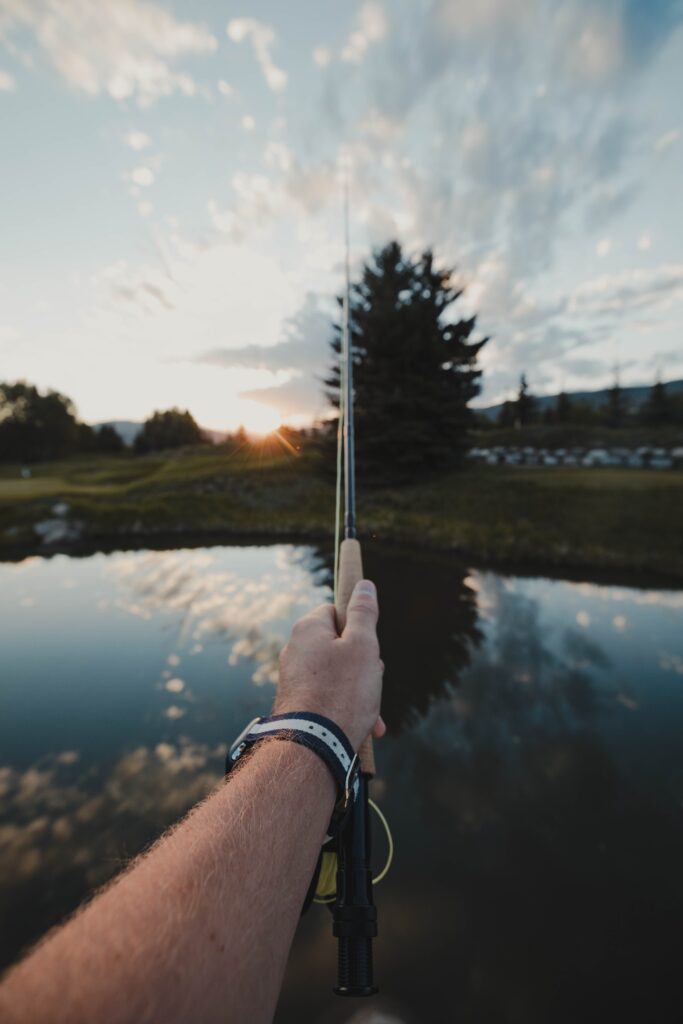
Combination and Hybrid Lines
Benefits of Combining Types
Combining different types of fishing lines can offer unique benefits and customization options. By using a combination of monofilament, fluorocarbon, and braided lines, anglers can maximize the advantages of each line type while minimizing the disadvantages.
For example, a common technique among anglers is to use a fluorocarbon or monofilament leader attached to a braided mainline. This allows for the benefits of low visibility and sensitivity offered by the fluorocarbon or monofilament leader, while still taking advantage of the high strength and casting distance provided by the braided mainline.
Hybrid Line Options
There are also hybrid lines available on the market that combine the characteristics of different line types in a single product. These hybrid lines may have a fluorocarbon or monofilament core with a braided coating, or vice versa. These lines aim to provide a balance between the benefits of different line types while minimizing their disadvantages.
Hybrid lines can be advantageous for anglers who want to simplify their fishing setup by using a single line that offers a combination of strength, sensitivity, and invisibility. It is important to research and compare the specific characteristics and performance of different hybrid lines before making a selection.
Considerations before Mixing
Before mixing different types of fishing lines, there are a few considerations to keep in mind. Firstly, it is important to ensure that the different lines are compatible and can be securely tied together using appropriate knots. Some line combinations may require specific knot-tying techniques to ensure a strong and reliable connection.
Additionally, anglers should consider the diameter and strength of the different lines to ensure that they are appropriately matched. Using a too-thin leader line with a heavier braided mainline, for example, may result in line breakages or a less effective presentation.
It is also important to consider the specific fishing techniques and targets when deciding on a line combination. Different combinations may perform better in certain situations, so it is advisable to experiment and adjust to find the combination that works best for your fishing style and targets.
Testing the Fishing Line
Breaking Strength Test
Testing the breaking strength of a fishing line is crucial in determining its overall strength and reliability. To conduct a breaking strength test, tie the line to a secure object or fishing rod, and apply gradually increasing pressure until the line breaks. Repeat this test multiple times to get an average breaking strength measurement.
By testing the breaking strength, anglers can compare different line types and ascertain which options are best suited for their target species and fishing conditions. It is important to remember that the breaking strength may vary depending on the line’s diameter and brand.
Knot Strength Test
Knot strength is another important factor to consider when testing fishing lines. Tie different knots using the line and test their strength by applying pressure and pulling on the line. Evaluate how the knots hold up and determine which knots provide the highest degree of strength and security.
Knot strength is critical in ensuring that the line does not break during a fight with a fish. It is advisable to practice tying different knots and to select one that offers both strength and ease of tying for your chosen fishing line.
Abrasion Resistance Test
Testing a fishing line’s abrasion resistance is essential, particularly when fishing in waters with rough surfaces, such as rocks or submerged vegetation. To conduct an abrasion resistance test, rub the line against rough surfaces and observe any wear or damage. A line with high abrasion resistance will be able to withstand rubbing against these surfaces without significant signs of wear.
Abrasion resistance is crucial in preventing the line from breaking when it comes into contact with underwater obstacles. A line with low abrasion resistance may weaken and fray, increasing the risk of breakage and reducing its overall performance.
Sensitivity Test
Testing the sensitivity of a fishing line allows anglers to evaluate how well it transmits vibrations and signals from fish bites or movements. To conduct a sensitivity test, attach a small weight or lure to the line and observe how easily you can detect subtle bites or movements. A line with high sensitivity will allow you to feel even the slightest changes and react accordingly.
Sensitivity is particularly important when finesse fishing or when targeting species that have a delicate or subtle way of biting. A line with low sensitivity may result in missed bites and decreased catch rates.
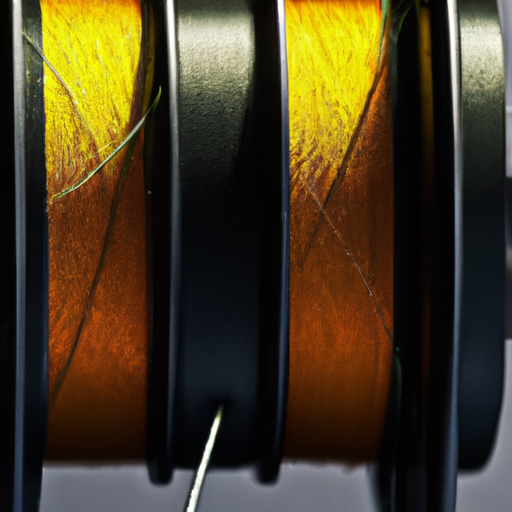
Beyond the Line Type
Line Color
While the type of fishing line is important, the color of the line can also impact its performance. Different line colors may be more or less visible to fish depending on the water conditions and fishing environment. In clear water, a more transparent or invisible line color may be preferred to minimize visibility. In murky or dark water, a high-visibility line color may be advantageous for easier tracking and bite detection.
It is important to consider the water conditions and the species being targeted when selecting the color of your fishing line. Experimenting with different colors and observing their performance can help determine which option works best for your fishing needs.
Line Diameter
The diameter of the fishing line can also affect its performance and overall strength. Thinner lines generally offer less visibility in the water, increased casting distance, and better sensitivity. However, thinner lines may also be more prone to breakage or damage. Thicker lines, on the other hand, offer increased strength and durability but can be more visible in the water and have reduced casting distance.
When selecting the diameter of your fishing line, it is important to consider the fishing conditions, target species, and the desired balance between line strength and performance.
Line Weight and Action
The weight and action of the fishing line are additional factors to consider, especially for anglers who enjoy using spinning reels or engaging in specific fishing techniques. Lighter lines are generally used with ultralight or light tackle setups and are more suitable for finesse techniques. Heavier lines, on the other hand, are typically used for larger fish species or when fishing in heavy cover.
The action of the line refers to how flexible or stiff it is. A line with more flexibility can provide better lure action and can absorb the shock of fish strikes. A stiffer line, on the other hand, may be preferred for certain applications that require more control and less line stretch.
Line Maintenance
Proper line maintenance is essential for maximizing the lifespan and performance of your fishing line. Routine inspections should be conducted to check for any signs of wear, such as fraying or weakened spots. It is also important to clean the line regularly to remove any dirt, debris, or saltwater residue. Simple soap and water can be used for cleaning, and it is important to ensure that the line is thoroughly dried before storing it.
Storing the fishing line correctly is also crucial. Avoid exposing the line to excessive sunlight or extreme temperature conditions, as this can lead to premature deterioration. Storing the line in a cool, dry, and dark place, such as a tackle box or storage bag, can help prolong its lifespan.
Proper Line Selection Process
To go through the proper line selection process, there are several steps to follow:
-
Assess Your Fishing Style and Targets: Consider the type of fishing you primarily engage in, such as freshwater or saltwater, casting or trolling, and the species you target. This will help you determine the line type that is best suited for your specific fishing needs.
-
Consider the Fishing Conditions: Evaluate the fishing conditions you commonly encounter, such as water clarity, presence of structure or cover, and weather conditions. These factors will influence the visibility, strength, and durability requirements of your fishing line.
-
Determine the Line Characteristics Needed: Based on your fishing style, targets, and prevailing conditions, determine the specific line characteristics that are important to you, such as visibility, sensitivity, abrasion resistance, and knot strength.
-
Research and Compare Brands: Look for reputable brands that offer fishing lines with the desired characteristics. Read reviews, consult with experienced anglers, and consider the reputation and track record of different brands.
-
Experiment and Adjust: Once you have selected a fishing line, it is important to experiment and adjust as needed. Test the line in various fishing situations and conditions to assess its performance and make any necessary changes.
Properly going through the line selection process will significantly increase your chances of finding the fishing line that suits your needs and preferences.
Maintaining and Replacing Fishing Line
Routine Inspections
Regularly inspecting your fishing line is important for detecting any signs of wear or damage. Look for frayed spots or weak areas, as these can significantly weaken the line and increase the risk of breakages. If any damage is detected, it is advisable to replace the line to ensure optimal performance and prevent unexpected line failures while fishing.
Proper Storage Techniques
Properly storing your fishing line is crucial for maintaining its performance and longevity. Avoid exposing the line to direct sunlight or extreme temperature conditions, as this can lead to accelerated deterioration. It is recommended to store the line in a cool, dry, and dark place, such as a tackle box or storage bag. This will minimize the chances of the line becoming damaged or compromised.
Knowing When to Replace
Knowing when to replace your fishing line is essential for maintaining a high level of performance and reducing the risk of breakages. Over time, fishing line can become weakened due to exposure to UV rays, water absorption, and general wear and tear. As a general rule of thumb, it is advisable to replace monofilament and fluorocarbon lines at least once a year, or more frequently if heavily used or exposed to harsh conditions. Braided lines tend to have a longer lifespan and may only require replacement every few years.
Additionally, if you notice any signs of wear, such as fraying, weak spots, or decreased knot strength, it is recommended to replace the line immediately. It is always better to err on the side of caution and replace the line before it fails, rather than risk losing a fish or damaging your equipment.
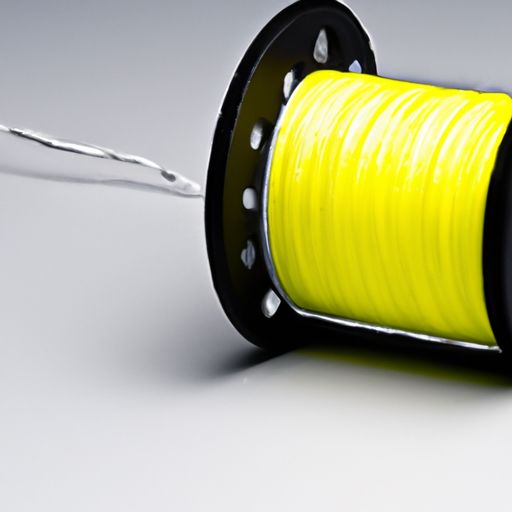
Conclusion
Choosing the right fishing line type is a crucial decision that can significantly impact your fishing success and overall experience. By considering factors such as fishing style and targets, visibility, strength and durability, sensitivity, knot strength, maneuverability, casting distance, abrasion resistance, cost, and personal preference, you can make an informed decision and select the line that best suits your needs.
Monofilament lines offer versatility and ease of use, with advantages such as affordability, good knot strength, and buoyancy. However, they have disadvantages such as high visibility and reduced sensitivity.
Fluorocarbon lines provide near-invisibility in the water and excellent sensitivity, making them ideal for clear or heavily pressured fishing situations. Though they are more expensive and can be stiffer to handle.
Braided lines offer incredible strength, increased sensitivity, and excellent casting distance. However, their increased visibility, lack of shock absorption, and tendency to dig into themselves on the reel are potential drawbacks.
Combining different types of fishing lines or using hybrid lines allows for customized setups that maximize the benefits of each line type while minimizing the disadvantages.
Testing the fishing line’s breaking strength, knot strength, abrasion resistance, and sensitivity is crucial for evaluating its performance and reliability.
Beyond the line type, considering factors such as line color, diameter, weight, and action can further enhance your fishing setup.
Proper line selection involves assessing fishing style and targets, considering fishing conditions, determining line characteristics needed, researching and comparing brands, and conducting experiments.
Maintaining and replacing fishing line involves routine inspections, proper storage techniques, and knowing when to replace the line based on signs of wear or damage.
Ultimately, choosing the right fishing line type and properly maintaining it will contribute to a more enjoyable and successful fishing experience.



